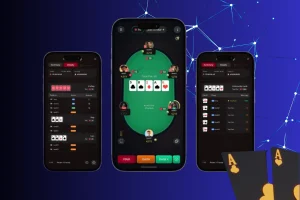Mobile Poker Mastery: Optimizing Play on Smartphones and Tablets

Let’s be honest. The classic image of a poker player—hunched over a green felt table under the dim glow of a casino lamp—is, well, a bit outdated. Today’s action is happening on the bus, in a waiting room, or on the couch with the TV on in the background. Mobile poker isn’t just a convenience; it’s a dominant way to play the game.
But here’s the deal: playing on a tiny screen is a different beast entirely. It’s not just about smaller cards. It’s a complete shift in how you interact with the game. Mastering it requires a new set of skills. Let’s dive into how you can optimize your play and turn your smartphone into a powerful poker weapon.
Taming the Tiny Screen: Your Setup for Success
Before you even think about strategy, you need to get your digital environment right. A cluttered, laggy interface is a fast track to making costly mistakes. Think of it as tuning your instrument before a concert.
Device and App Optimization
First things first, keep your device clean. Close all those background apps. A poker app demands quick reflexes, and you can’t afford a sudden lag when you’re deciding to go all-in. Honestly, that spinning wheel of death has cost more players money than a bad beat.
Next, dive into the app’s settings. Don’t just accept the defaults. Look for:
- Disable Animations: Fancy card deals and chip splashes are cool, but they slow the game down. Turn them off. Speed is your friend.
- Auto-Center on Action: This is a non-negotiable. It ensures the game automatically scrolls to you when it’s your turn to act. No more missed hands because you were scrolling.
- Large Cards Mode: If your app has it, use it. Your eyes will thank you during a long session.
The Battle Against Distraction
This is the single biggest challenge of mobile poker strategy. At home, you might have multiple monitors dedicated to the game. On your phone, a single text message can break your concentration.
Do not disturb mode is your best friend. Turn it on. Put your phone face down if you’re in a hand and not actively acting. You have to create a bubble of focus, even if it’s just for a few seconds at a time. It’s about training yourself to ignore the ping of a social media notification—the modern-day poker tell.
Adapting Your Poker Strategy for Mobile Play
Okay, your device is set. Now for the mental game. You can’t just copy-paste your desktop strategy onto a 6-inch screen. You have to adapt.
Pre-Flop Discipline is King
On a small screen, it’s harder to track opponents across multiple tables. This makes a tight-aggressive (TAG) approach even more effective. You want to play fewer hands, but play them aggressively. Sticking to a strong pre-flop range simplifies your post-flop decisions immensely. When you’re juggling the interface, a simpler decision tree is a massive advantage.
Embrace the “One Table” Mentality
Sure, you can multi-table on mobile. But should you? For most players, the sweet spot for optimizing mobile poker play is one, maybe two tables max. The goal is quality over quantity. You’ll make better decisions, spot more tells, and ultimately win more at a single table than you will losing on four because of misclicks.
Speaking of misclicks… they are the bane of mobile poker. That tiny “Fold” button is dangerously close to the “All-In” button. Always double-check your action before confirming. A moment of patience can save your entire stack.
Advanced Tactics: Reading the Digital Tells
You might think physical tells are gone. And they are. But they’ve been replaced by betting timing tells and other digital patterns. Paying attention to these can give you a real edge.
For instance, a player who consistently uses a very quick pre-flop timing for raises likely has a very strong, automated range. But a player who takes a long time pre-flop and then just calls? They might be in a tricky spot with a medium-strength hand. Conversely, a snap-call on the river often indicates a draw that missed, while a long pause followed by a bet can signal real strength.
| Common Timing Pattern | Potential Interpretation |
|---|---|
| Instant Check/Fold | Extreme weakness. No interest in the pot. |
| Quick Call | Often a draw or a marginal hand with little thought. |
| Long Pause, Then Bet | Often strength, trying to appear thoughtful. |
| Long Pause, Then Call | Indecision, usually a medium-strength hand. |
Turning Limitations into Strengths
Here’s a secret: the very constraints of mobile play can make you a better player. The limited screen space forces you to focus on the fundamentals. You can’t rely on a dozen HUD stats popping up. You have to pay attention to the flow of the game, the bet sizes, and the timing tells.
This actually brings you closer to the essence of poker—reading situations and people, not just data. It hones your intuition. In fact, many players find their decision-making improves when they’re stripped of complex tools and have to rely on core principles.
So, the next time you fire up a game on your phone, don’t see it as a lesser version of the real thing. See it as a different, and in some ways purer, test of your skills. It’s poker, distilled. A quiet, constant battle fought in the palm of your hand.
